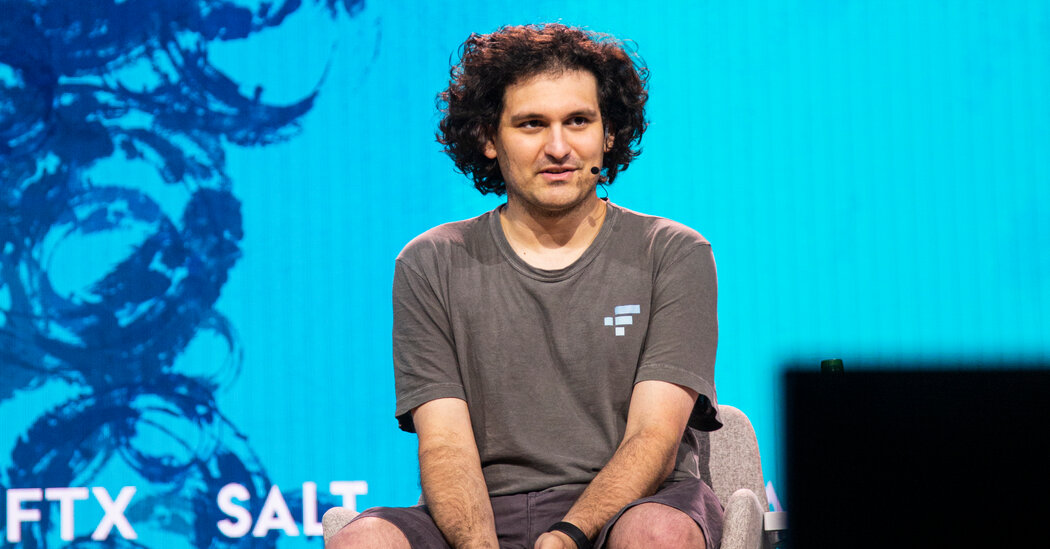FTX, one of the world’s largest cryptocurrency exchanges, collapsed with astonishing speed this month.
A run on deposits left the company owing customers $8 billion, setting off a chain of events that has rocked the crypto world and led to investigations by the Securities and Exchange Commission and the Justice Department.
At this time last month, the $32 billion cryptocurrency company was managing billions of dollars in client assets; now FTX could owe money to over a million people and organizations.
Just three weeks ago, Sam Bankman-Fried, the founder and CEO of FTX and the figure at the center of the crisis, tried to reassure his customers. “FTX is fine,” he wrote on Twitter. “Possessions are fine.” The following day, Mr. Bankman-Fried announced his plan to sell FTX to Binance, a rival cryptocurrency exchange.
Within days, Binance pulled out of the deal, FTX filed for bankruptcy, and Mr. Bankman-Fried, once a crypto star, had resigned.
These are the latest developments regarding the crisis:
What is the latest news about FTX’s bankruptcy?
On November 22, a new chapter began for FTX as it began its bankruptcy proceedings in a Delaware federal court.
The aftermath of FTX’s demise
The sudden collapse of the crypto exchange has stunned the industry.
- A spectacular rise and fall: Who is Sam Bankman-Fried and how did he become the face of crypto? The Daily charted the spectacular rise and fall of the man behind FTX.
- A symbiotic relationship: Mr. Bankman-Fried’s built FTX in part to support the trading activities of Alameda Research, its first company. The ties between the two entities are now coming under scrutiny.
- Missing assets: Lawyers for FTX said a significant portion of the company’s assets had been stolen or missing, casting doubt on the chances of recovering billions of dollars in crypto that customers have lost.
- A bid for influence: In just three years, Mr. Bankman-Fried embarked on a massive operation to convince politicians, regulators and nonprofits to support his crypto goals. Here’s how.
James Bromley, a partner at the law firm Sullivan & Cromwell representing FTX, said “a significant number of assets have been stolen or are missing”.
The bankruptcy case involves more than 100 companies and could affect more than one million creditors.
Mr. Bankman-Fried, 30, was replaced as chief executive of FTX this month by John Jay Ray III, a veteran of corporate upheavals, including Enron’s bankruptcy proceedings. Mr. Ray wrote in a damning lawsuit in the U.S. Bankruptcy Court for the District of Delaware that he had never faced “such a complete failure of corporate control.”
“This situation is unprecedented,” added Mr. Ray in the application.
How could this affect BlockFi and other companies?
The implosion of FTX sent shockwaves through the crypto and financial communities. Numerous funds and crypto start-ups became entangled in FTX, which extended lifelines to other companies after the crypto market crashed in the spring.
Crypto asset prices fell on Monday and the price of Bitcoin fell.
On Monday, BlockFi, a cryptocurrency lender and financial services company with close ties to FTX, filed for bankruptcy. BlockFi had suspended withdrawals this month, explaining that it had “significant exposure” to FTX.
Genesis Global Capital, a crypto lender that was a trading partner with FTX, told its clients this month it would stop withdrawals due to liquidity issues.
Genesis then hired a restructuring consultant to explore options, including possible bankruptcy. About $175 million of his assets were in FTX when the exchange froze accounts.
What do we know about Sam Bankman-Fried?
Mr. Bankman-Fried is facing investigations by the SEC and the Justice Department. They will depend on whether FTX has been illegally lending client money to Alameda Research, a crypto hedge fund that Mr. Bankman-Fried also founded.
“It’s a cross between an allegedly extraordinary crime and, at the same time, the most extraordinary carelessness and failure of basic checks,” said Eugene Soltes, a business integrity expert at Harvard Business School. If a traditional brokerage firm were accused of using client money in a similar way, he added, “FBI agents would be walking the halls picking up documents and computers.”
In court last week, FTX lawyers spared Mr. Bankman-Fried. “The Emperor had no clothes,” Mr Bromley said, adding that Mr Bankman-Fried ran FTX as a “personal fief”.
Before his demise, Mr. Bankman-Fried was a prominent member of the effective altruistic community, a movement dedicated to maximizing the impact of giving that is popular in Silicon Valley.
Mr. Bankman-Fried also donated to political causes and candidates. According to Federal Election Commission records, he gave about $40 million to federal campaigns and committees that mostly supported Democrats in the months leading up to the 2022 election. Those efforts made him the party’s second-largest donor, after George Soros, the billionaire financier.
Who else is key to the rise and fall of FTX?
More than 80 investors poured nearly $2 billion into the company over two years, often agreeing to invest in the bustling company with little oversight. There were no investors on FTX’s board of directors, and FTX did not tell investors about the nature of its relationship with Alameda Research.
FTX’s investors included powerful and well-known companies, including Sequoia Capital, SoftBank, and BlackRock. Sequoia, which published a glowing profile of Mr. Bankman-Fried on its website this year, apologized to its limited partners for its investment in FTX, which it now values at $0.
Caroline Ellison, who was the CEO of Alameda Research, is also a major character in the FTX fallout. The week FTX and Alameda collapsed, Ms. Ellison told employees her company had dipped into FTX client funds.
Ms. Ellison, 28, a Stanford graduate who sometimes dated Mr. Bankman-Fried, lived in a residence in the Bahamas with nine roommates, including Mr. Bankman-Fried and other top FTX executives.

